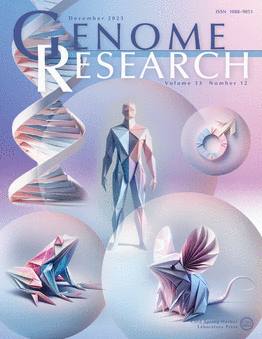通过表达谱和结构分析揭示重复基因的功能命运
IF 5.5
2区 生物学
Q1 BIOCHEMISTRY & MOLECULAR BIOLOGY
引用次数: 0
摘要
基因复制是功能创新的主要进化来源。在重复事件发生后,基因拷贝(平行物)可能经历不同的命运,包括保留功能修饰(如亚功能化或新功能化)或丢失。当保留平行关系时,这将导致复杂的正交关系,包括一对多或多对多。在这种情况下,确定哪个一对一对更有可能具有保守函数可能是一项挑战。有人提出,在基因复制之后,序列分化较慢的拷贝更有可能保持祖先的功能-这里称为“最小分化同源(LDO)猜想”。本研究探索了这一猜想,使用一种新颖的方法来识别类似物的不对称进化,并将其应用于PANTHER数据库中生命之树的所有基因家族。然后使用超过100万种蛋白质的结构数据和16种动物和20种植物的表达数据来研究复制后的功能差异。这是迄今为止最全面的分析,揭示了虽然大多数旁系显示出相似的序列进化速度,但基因复制后分支长度的显着差异可能与功能分化有关。总体而言,研究结果支持最小分叉正交子猜想,表明最小分叉正交子倾向于保留祖先功能,而最大分叉正交子可能获得新的、潜在的特殊作用。本文章由计算机程序翻译,如有差异,请以英文原文为准。
Unveiling the functional fate of duplicated genes through expression profiling and structural analysis
Gene duplication is a major evolutionary source of functional innovation. Following duplication events, gene copies (paralogues) may undergo various fates, including retention with functional modifications (such as subfunctionalization or neofunctionalization) or loss. When paralogues are retained, this results in complex orthology relationships, including one-to-many or many-to-many. In such cases, determining which one-to-one pair is more likely to have conserved functions can be challenging. It has been proposed that, following gene duplication, the copy that diverges more slowly in sequence is more likely to maintain the ancestral function -referred to here as "the least diverged orthologue (LDO) conjecture". This study explores this conjecture, using a novel method to identify asymmetric evolution of paralogues and apply it to all gene families across the Tree of Life in the PANTHER database. Structural data for over 1 million proteins and expression data for 16 animals and 20 plants were then used to investigate functional divergence following duplication. This analysis, the most comprehensive to date, revealed that whilst the majority of paralogues display similar rates of sequence evolution, significant differences in branch lengths following gene duplication can be correlated with functional divergence. Overall, the results support the least diverged orthologue conjecture, suggesting that the least diverged orthologue (LDO) tends to retain the ancestral function, whilst the most diverged orthologue (MDO) may acquire a new, potentially specialized, role.
求助全文
通过发布文献求助,成功后即可免费获取论文全文。
去求助
来源期刊

Genome research
生物-生化与分子生物学
CiteScore
12.40
自引率
1.40%
发文量
140
审稿时长
6 months
期刊介绍:
Launched in 1995, Genome Research is an international, continuously published, peer-reviewed journal that focuses on research that provides novel insights into the genome biology of all organisms, including advances in genomic medicine.
Among the topics considered by the journal are genome structure and function, comparative genomics, molecular evolution, genome-scale quantitative and population genetics, proteomics, epigenomics, and systems biology. The journal also features exciting gene discoveries and reports of cutting-edge computational biology and high-throughput methodologies.
New data in these areas are published as research papers, or methods and resource reports that provide novel information on technologies or tools that will be of interest to a broad readership. Complete data sets are presented electronically on the journal''s web site where appropriate. The journal also provides Reviews, Perspectives, and Insight/Outlook articles, which present commentary on the latest advances published both here and elsewhere, placing such progress in its broader biological context.
 求助内容:
求助内容: 应助结果提醒方式:
应助结果提醒方式:


